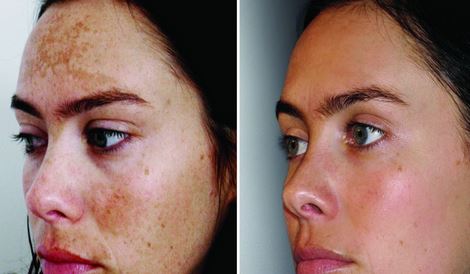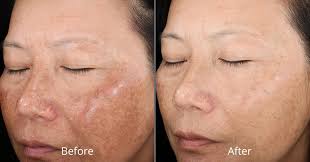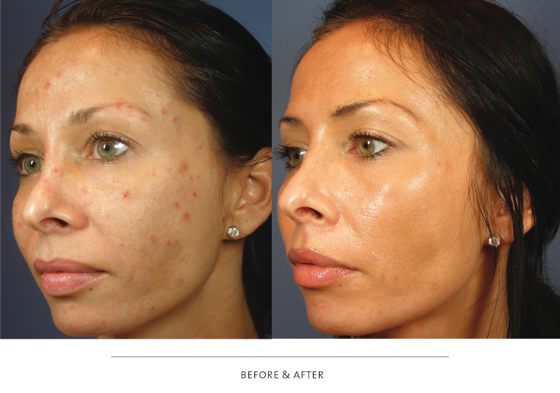Peels
The chemical peel is one of the oldest cosmetic procedures in the world, and was performed in ancient Egypt, Greece, and Rome to help people achieve smoother, more beautiful skin. Today, chemical facial peels are popular because they offer nearly immediate results and can be performed as an outpatient procedure.
It is generally very misleading to use the term “peel” when referring to a skin peel as most peels do not result in the recipient from peeling. There are many different types of peels that are used for different skin conditions to achieve different results. One rule of thumb is that the more aggressive peels give a deeper penetration and this enables them to often achieve better results.
A chemical peel is a technique used to improve the appearance of the skin on the face, neck or hands. A chemical solution is applied to the skin that causes it to exfoliate and in some cases, peel off. The new, regenerated skin is usually smoother and less wrinkled than the old skin but it is also temporarily more sensitive to the sun.
There are three basic types of chemical peels:
Superficial or lunchtime Peel
Alpha-Hydroxy Acid (AHA) or another mild acid is used to penetrate only the outer layer of skin to gently exfoliate it. The treatment is used to improve the appearance of mild skin discoloration and rough skin as well as to refresh the face, neck, chest or hands.
Medium Peel
Glycolic or Trichloroacetic Acid (TCA) is applied to penetrate the out and middle layers of skin to remove damaged skin cells. The treatment is used to improve age spots, fine lines and wrinkles, freckles and moderate skin discoloration. It also can be used to smooth rough skin and treat some precancerous skin growths, i.e. actinic keratosis.
Deep Peel
Tricholoracetic Acid (TCA) or phenol is applied to deeply penetrate the middle layer of skin to remove damaged skin cells. The treatment removes moderate lines, age spots, freckles and more serious imperfections such as blotchiness, coarse wrinkles, and acne scars. Patients will see a dramatic improvement in skin appearance. The procedure is used on the face and only can be performed once. However, deep (phenol) chemical peel recovery is lengthy and less comfortable compared to milder chemical peels.
When is a chemical Peel appropriate?
Chemical peels are used to treat a number of conditions including:
- Acne scars
- Aging skin
- Crow’s feet
- Hyperpigmentation
- Melasma
- Scars
- Sun damaged skin
- Sagging skin
- Wrinkles
Who is not a candidate for a chemical Peel?
The procedure is not recommended for individuals with infections, active skin disease, cut or broken skin, sunburns or active Herpes simplex 1 sores. Other counter-indications include patients who are:
- Nursing or pregnant.
- Have taken Accutane in last six months.
- Have psoriasis, eczema, dermatitis or rosacea.
- Have used Retin-A, Renova, prescription skin care products, products that contain ascorbic acid, bleaching or skin-lightening agents or other acid-based products in the last 48 hours.
Are chemical Peels painful?
Chemicals peels can sting slightly, but do not cause a great deal of pain. The gentlest peels use Alpha-Hydroxy Acid, Glycolic, Lactic or fruit acids are also gentle. They may cause stinging, redness, irritation and crusting but as the skin begins to adjust all these problems will lessen.
Tricholoracetic Acid (TCA’s) are used for stronger peels. They remove wrinkles, superficial blemishes and pigment problems.Phenol is the strongest of all treatments and removes deep lines and wrinkles on the face.
These type of treatments sting more than those with the gentler acids. After the treatment there may be redness, swelling and irritation for a short period of time but the use of creams and gels will reduce these effects.




